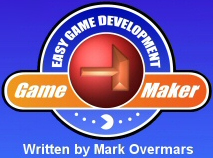Learn to make games
(I'm still writing this)
In other words, this isn't done yet.
Sorry. It'll be done soon, hopefully.
Last time I checked this:
31st of August '09
Sorry. It'll be done soon, hopefully.
Last time I checked this:
31st of August '09
1) Read this first
Before you go any further, get this:
All okay still? Let's go.
- This is the way I make games. It might not be the way for you. Experiment.
- If you make games this way, they'll work only on Windows.
- These aren't flash games! You can put them on the internet, but people have to download them before playing.
- Game Maker is NOT A PROGRAMMING LANGUAGE. It's a program with a user interface. You can create games just fine with Drag-and-Drop icons that mean different things. For really complicated games though, you might have to do some coding in Game Maker Language (GML), but it's pretty simple once you know how the program works otherwise.
- If you somehow screw up and your computer, your head, toes and the internet all suddenly explode, it's your fault.
All okay still? Let's go.
2) Get GameMaker
Game Maker is the platform that I've chosen for making my games. It's relatively easy to use. Go download GameMaker 7.0 Lite and install it. It's free.
When you start it, you'll get a window saying something about how the Pro version is absolutely awesome and how you should spend some money on it. You really really really don't need Pro to make a good game, so disregard the advice to begin with. Spend the money when/if you think it's worth it. I paid for it after about three years of using it.
When you start it, you'll get a window saying something about how the Pro version is absolutely awesome and how you should spend some money on it. You really really really don't need Pro to make a good game, so disregard the advice to begin with. Spend the money when/if you think it's worth it. I paid for it after about three years of using it.
3) Learn GM basics (not as hard as it looks, but still quite something)
Even though GM is relatively easy, it's still quite a big step if you haven't had any previous experience in programming. You have to get used to it. When I opened the program first, I had NO IDEA about anything. Learning is totally worth it.
The little icon shown below each part is what Game Maker generally uses to identify that resource!
The little icon shown below each part is what Game Maker generally uses to identify that resource!
A Step is one complete run-through of the game code. Computers nowadays are so fast that you can have many steps happen in just one second! (30 Frames Per Second is common)
A step is composed of many events.
A step is composed of many events.




